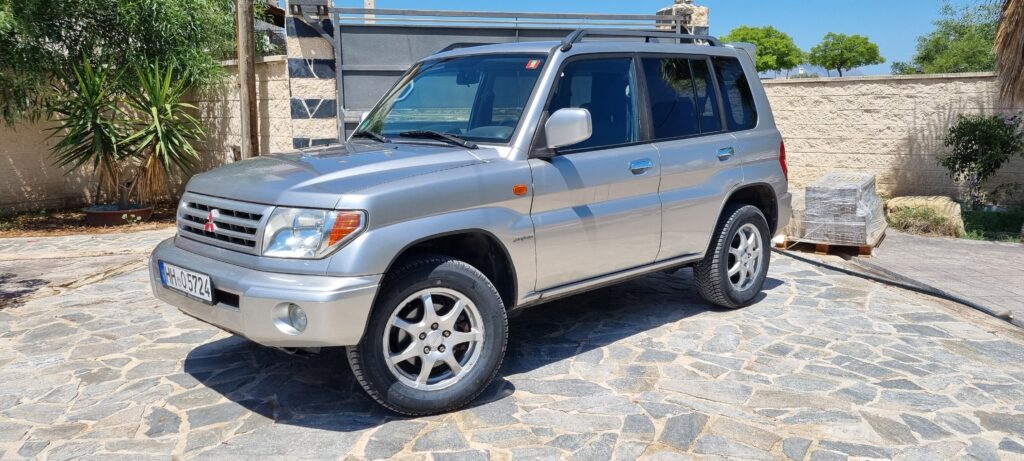
Sure fire way of wasting your money and time: importing a vehicle to Spain from the UK or USA
Lately, the buzz is all about the price tag of bringing a car into Spain from the UK or the USA. This article aims to cruise through the pros and cons of this venture, and park at the conclusion that it may not be the wheel deal after all.
Why ship your own car at all?
It seems like the siren call of savings is luring folks to ship their wheels to Spain, with the almighty dollar (or euro) steering the wheel in 99% of cases. The logic is simple: why say adios to your beloved ride when you can just ship it over and keep the odometer rolling? The web is abuzz with companies waving the ‘no EU import fees’ flag for your own car, making it sound like a fiesta of savings. But hold your horses – it’s not all sunshine and siestas!
Now, if you’re eyeing a classic beauty from outside the EU, like that ’69 Mustang that’s been revving in your dreams, then you might want to tune out. Classics, rarities, and those flashy supercars play by their own rules, and importing them can be a victory lap worth taking. But this little nugget of wisdom? It’s for the daily drivers, the faithful commuters who just want to keep cruising in their familiar chariot.
Can a foreign car even be registered in Spain?
Can you register your foreign car in Spain? Well, it’s a classic case of ‘yes, but…’ If you’re moving to Spain, bringing your beloved car along as part of the moving caravan, then congratulations, you’re in luck! You can indeed register your car in Spain. But, and it’s a big but, there are some hoops to jump through, and we’ll dive into those fun details shortly.
Now, if you’ve got your eye on a shiny car from outside the EU, and you’re dreaming of cruising the Spanish streets with it, you might want to pinch yourself awake. At present, the maze of strict regulations in Spain turns the dream into a bit of a nightmare. Registering a non-EU vehicle in Spain is a Herculean task, and even if by some miracle you manage to get a Spanish license plate, be prepared for a list of caveats longer than a tapas menu. So, unless you enjoy a good bureaucratic challenge, you may want to reconsider.
Why someone from America should leave their car behind:
So you have decided to leave the US and want to settle down in sunny Spain. Here are the reasons why you as an american should sell your car while you are still stateside and purchase a vehicle when in Spain:
- You won’t save a penny. You will actually be losing more money when you ship your own vehicle and use it in Spain.
- Most american cars are too big for Europe. Driving them on small, narrow european roads will be a nightmare and trying to find a parking spot will be nearly impossible.
- No warranty: Your brand new vehicle might still have a couple of years warranty left on it, but once it leaves the USA that is gone.
- Gas prices: Gasoline costs about 4x more in Europe compared to the USA. Filling up that car or truck will put a noticeable dent in your bank account.
- Your car will be worth pennies on the dollar when it comes time to sell it.
- Who is going to fix your car when it breaks down and how are you going to get parts if your vehicle isn’t sold in Europe?
This part is going to explain why sending your car over would actually cost you more money and be a bigger hassle compared to purchasing a car in Spain or the EU in general. Remember, you won’t be paying the 30% EU Import Tax when relocating to Spain, but those savings are eaten up with the shipping of the vehicle in most cases.
- Shipping costs: Shipping costs around 10k for a one way trip from the US to Europe including all the handling costs in the harbor, insurance etc. Don’t forget that the actual boat ride won’t be that expensive. It’s the fees in the port plus all the handlers required to get your vehicle out of the states and into the EU that will nickel and dime you. Plus you have to get your car to the harbor somehow, and you also have to get your car out of the port in Europe. Depending on where you live and where your car is being sent from and going to, that could be another couple of thousand dollars / euros.
- Rental car: The chances of you bringing your car to the port and then grabbing the next flight to Spain are slim to none. Even so, your car still won’t be in Spain when your flight lands. This means you will need to rent a car for several weeks when you arrive which depending on the season isn’t going to be cheap. Worst case scenario: you have to rent a car for a couple of weeks in the US and also in Spain.
- Homologation: Welcome to the thrilling world of vehicle homologation, where your car gets a European makeover! Picture this: your shiny car arrives in Spain, but before it can strut its stuff on the European catwalk, it needs a bit of a wardrobe change. That’s right, even if your ride is a European native like Audi, BMW, Mercedes, or VW, it’s not quite ready for the EU spotlight. The headlights and tail lights are like last season’s fashion – totally out of vogue with EU standards.
Now, if your vehicle is a fresh-faced newbie, less than 3 years old, brace yourself. There’s no bargain bin for parts; you’re heading straight to the dealership for those high-fashion LED headlights, costing a small fortune per side. And don’t think the tail lights are the cheap accessory here; they’re just as pricy.
Thinking of bringing an American brand to the party? Chevrolet, GMC, Dodge – oh my! Finding replacements for these will be like searching for a needle in a haystack… a very expensive haystack. And don’t forget the pièce de résistance, the rear fog light – it’s the must-have accessory if your vehicle is lacking one.
But wait, there’s more! Since your car was born and raised in the USA, it lacks the Certificate of Conformity – the EU’s VIP pass. Without it, you’re not getting past the bouncer at the ITV technical inspection. An engineer will need to whip up a datasheet for your car, and it’s not going to be cheap – think at least 1,500€. So, open up that wallet if you want your car to go global! - Repairs: When it comes to car repairs, it’s a road less traveled by the average Joe. Sure, an oil change is no biggie, but when your car decides to throw a tantrum, who’s going to play the mechanic? Picture this: you’re near a US base in Europe, and voila! The dealerships have a gadget galore with not one, but two sets of diagnostic wizardry—one for EU chariots and another for their American cousins. But if you’re driving a brand that’s as rare in Europe as a sunny day in London, you’re in for a quest to find that mystical mechanic who can actually decipher the riddles under your hood. Need a part that’s as elusive as a quiet day on the internet? Time to call Uncle Sam and wait for that airmail. And don’t forget to tip the customs officer for the pleasure of receiving your precious cargo.
Now, let’s talk about the key fob fiasco. Lose it or break it, and your car morphs into an oversized lawn ornament. Here’s the kicker: you can’t just waltz into a European dealership and snag a key fob for your American ride. Why? Because American key fobs are like the forbidden fruit on the radio waves—they operate on the 315 MHz frequency, which is Europe’s ‘keep out’ sign reserved for defense secrets. So, using a US key fob in Europe is technically as rebellious as wearing socks with sandals—illegal but not enforced. But don’t worry, you won’t get thrown in the clink for unlocking your car. The real catch? No one can sell you a new fob, and programming one is off the table since the equipment is as absent as a quiet toddler. Your only hope is to reach across the pond to a US dealership, and good luck with that if your car isn’t there to say ‘hello’ in person. - Emissions: In the whimsical world of EU emissions, if your car is more of a mystery on wheels and doesn’t comply with the EU’s emissions standards, it gets slapped with the “UNKNOWN” label. This is the vehicular equivalent of being the last kid picked in dodgeball – you’re going to feel the sting. Not only will your wallet cry due to the hefty taxes, but your car will also get the cold shoulder from cities bustling with over 50,000 people. Why? Because it lacks that all-important emissions sticker, the golden ticket to urban mobility.
- Resale Value: When the time comes to part with your beloved car, you might find that its resale value has shrunk faster than a cotton shirt in hot water. The fact that it’s a US model in a sea of EU versions doesn’t exactly scream ‘buy me’ to potential used car shoppers. So, unless you’re willing to slap a bargain-basement price tag on it, you might just end up holding onto it for a bit longer than expected.
Now if you add all of those costs up and include the loss you will be making when putting your car on the used car market in a couple of years, the question remains: is it worth going through all the hassle, hoops, and red tape just to bring over a daily driver?
Why someone from the UK / Great Britain should leave their car behind
Numerous people have played with the idea of bringing their own car from the UK, or even flying back to the UK and purchasing a vehicle there to bring into Spain. Basically, the same apply here as to the US with some extra caveats.
- A right hand drive car is not suitable for Europe. Period. Yes, it is absolutely possible to drive a right hand drive car on the mainland. It is also possible to steer a car using your foot, but it still doesn’t make it a good idea. Driving a RHD vehicle on a B-Road behind a lorry could be the definition of “Hell”.
- No savings: The same applies here as with the American vehicles: at the end of the day, there are no savings. You might be saving some money in the beginning compared to purchasing a spanish left hand drive equivalent, but you will be losing all of those savings (and more) when selling your vehicle.
When adding the costs together once again bringing down a RHD vehicle won’t be much cheaper or (worst case) will actually cost more:
- Getting to the airport / the flight to england / getting to the car in England (for those wanting to fly up and bring a car back to Spain)
- Ferry
- Petrol
- Toll roads
- Import Fees
- Homologation costs (Headlights, ITV etc)
- Registration fees in Spain
Conclusion
As you can see, bringing over a daily driver isn’t the best idea. Yes, there are exceptions and once again this list isn’t for anyone wanting to bring over a car that is something “special”. We recommend taking a step back, and taking all the factors into consideration when playing with the thought of taking your car with you. You may think this step might make the move a bit easier, but in the end it could be something that causes more stress and problems than what it is really worth. Is that something you want to add to the already stressful situation of relocating to a new country?
Newest listings
2019 Audi A3 Sportback S Line TDI 2.0 Liters
€22,800.00
154,000 kilometers
Automatic
Diesel
Front Wheel Drive
Online car market with a large range of new and used cars and expert guides on buying, selling, and importing ✓ Cars ✓ RVs ✓ Motorcycles ✓ Commercial Vehicles
Copyright © 2023. All rights reserved.










